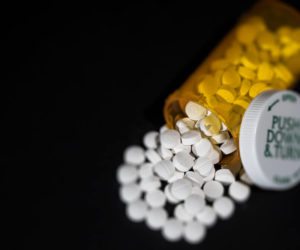4 Opioid Epidemic Myths

The opioid epidemic claims tens of thousands of lives every year. Here’s the truth behind four common opioid epidemic myths.
Myths about opioids and the opioid epidemic are widespread, but understanding the scope and nature of the problem is crucial for curbing prescription opioid abuse, getting addicted and dependent individuals into treatment, and preventing opioid abuse among young people. Here are four common opioid epidemic myths and the truth behind them.
1. People who are addicted to opioids just need to use a little willpower to stop.
The National Institute on Drug Abuse stresses that once an addiction develops, professional help is almost always needed to end it. Willpower and good intentions are rarely enough to stop using drugs–particularly opioids–once an addiction has developed.
Addiction is characterized by compulsive drug use despite the problems it causes in your life. It occurs as the result of changes in the physical structures and chemical functions of the brain. It affects your thought and behavior patterns, leading to unhealthy ways of thinking and behaving that perpetuate the addiction and may even leave you in denial that there’s a problem, even as your life is falling apart around you.
Addiction is highly complex disease of the brain. Without treatment, it will escalate. The prescription opioid abuse or heroin abuse that leads to addiction almost always has underlying causes, such as a history of trauma, chronic stress, or mental illness. Once an addiction develops, therapy is crucial for helping you address the underlying causes, re-learn healthy ways of thinking and behaving, and develop the coping skills you need to deal with triggers like cravings and stress.
2. Prescription opioids are safer than heroin because they’re prescribed by a doctor.
This is one of the most commonly believed opioid epidemic myths. Nearly half of all high school students and one-third of their parents believe that abusing prescription drugs is safer than using illegal drugs, since they’re prescribed by a doctor. But the truth is, prescription painkillers are every bit as dangerous as heroin.
Since 1999, overdose deaths involving prescription opioid painkillers have quadrupled, according to the Centers for Disease Control’s opioid epidemic statistics. In 2015, prescription opioid overdoses alone claimed over 17,000 lives. Additionally, over a thousand people are treated in the emergency department after misusing prescription opioids.
When a doctor prescribes opioids, she bases the dosage on a number of factors, including the patient’s weight, age, and the type of opioid prescribed. When people abuse painkillers, they usually don’t know the dosage, and they may not even know what type of opioid they’re taking. This can quickly lead to overdose and death if, for example, the prescription drug is a high dosage of fentanyl, which is many, many times stronger than opioids like codeine and morphine.
3. Using medication to treat opioid addiction is simply replacing one addiction with another.
Medication-assisted treatment is becoming the gold standard for opioid addiction treatment. Medication-assisted treatment involves administering medications that prevent withdrawal from setting in. These medications help to normalize brain function and block cravings, which enables addicted individuals to focus solely on treatment.
Just as someone with diabetes or heart disease takes medication to control the illness and its symptoms to prevent a relapse, someone with an opioid addiction can take medications for the same reasons. Medications used for medication-assisted treatment are methadone, buprenorphine, and naltrexone. Individuals can use these medications for the short-term or the long-term. Some will even use them for life.
Medication-assisted treatment has been shown to be more effective than medical detox for treating opioid dependence and addiction for the long-term while individuals work to restore their lives and develop essential skills to prevent relapse.
4.Treatment doesn’t usually work for opioid addiction.
One of the most damaging opioid addiction myths is that treatment is ineffective for opioid addiction. Relapse rates for opioid addiction are higher than those for any other drug. The relapse rate for opioid addiction is around 90 percent for those who don’t seek treatment, according to opioid epidemic statistics. Treatment dramatically reduces the risk of relapse by helping you:
- Develop the skills you need to cope with triggers.
- Identify and change harmful thought and behavior patterns.
- Address underlying causes of the addiction, such as trauma or stress.
- Find purpose and meaning in life without opioids.
- Learn to have fun and relax without opioids.
- Restore damaged relationships and improve family functioning.
- Address and treat any co-occurring mental illnesses, such as anxiety or depression.
The more engaged you are with your treatment plan, the better the outcome of treatment.
These and other opioid addiction myths prevent many people from getting the help they need to end an addiction, and they perpetuate the stigma of addiction, which is far more harmful than helpful in combating the opioid epidemic.
Recovering from an opioid addiction is hard work, but it’s worth it. Treatment can save your life, and it helps you restore your life on all fronts for greater happiness, health, and wellbeing.
If you or a loved one needs help with abuse and/or treatment, please call the WhiteSands Treatment at (877) 855-3470. Our addiction specialists can assess your recovery needs and help you get the addiction treatment that provides the best chance for your long-term recovery.
